
ACTA METALLURGICA SINICA
metrics 2024
Igniting Collaboration in the World of Alloys and Mechanics
Introduction
ACTA METALLURGICA SINICA, established in 1978 and published by SCIENCE PRESS, stands as a preeminent journal in the fields of metallurgy and materials science. This journal is particularly revered for its contributions to Metals and Alloys, Mechanical Engineering, Geotechnical Engineering, and Mechanics of Materials, with a commendable Q1 ranking in Metals and Alloys and notable placements in other engineering disciplines. With a robust history of facilitating scholarly communication from 1978 to 1991 and consistently since 1996, the journal provides a vital platform for researchers and practitioners to disseminate significant advancements in material science. Despite being a subscription-based journal, ACTA METALLURGICA SINICA remains pivotal, holding a Scopus ranking that places it in the top tiers of its categories, fostering an environment ripe for innovation and collaboration. This ensures that the journal remains central to the ongoing discussions and developments within the metallurgy community, serving both academic and professional interests.
Metrics 2024
 0.56
0.56 2.40
2.40 2.00
2.00 45
45Metrics History
Rank 2024
Scopus
IF (Web Of Science)
JCI (Web Of Science)
Quartile History
Similar Journals

Materials Physics and Mechanics
Transforming Understanding in Materials PhysicsMaterials Physics and Mechanics is a pivotal journal dedicated to advancing the fields of condensed matter physics, materials science, mechanical engineering, and the mechanics of materials. Published by the Institute of Problems in Mechanical Engineering, Russian Academy of Sciences, this journal has established itself as a valuable resource since its inception, particularly from 2003 to 2004 and now continuously from 2009 to 2024. Although it currently holds a Q4 categorization in various disciplines, its contributions are critical to understanding and developing new materials and their applications in engineering. The journal provides insightful articles that explore the nuances of material properties, their behaviors under different conditions, and the physical principles governing these phenomena. Though it operates under a traditional publication model, the insights provided within its pages are invaluable to researchers, professionals, and students striving to push the boundaries of knowledge in the materials domain. Its ISSN numbers (1605-2730, E-ISSN 1605-8119) serve as a gateway to a wealth of scientific knowledge emanating from the Russian Federation, contributing to the global discourse in materials physics and mechanics.
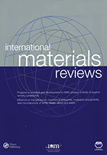
INTERNATIONAL MATERIALS REVIEWS
Advancing Knowledge in Materials Chemistry and EngineeringINTERNATIONAL MATERIALS REVIEWS, published by SAGE Publications Inc, is a leading journal dedicated to the comprehensive analysis of contemporary research in the fields of materials chemistry, mechanical engineering, mechanics of materials, and the study of metals and alloys. With an impressive impact factor and a Q1 ranking across multiple categories such as Materials Chemistry and Mechanical Engineering in 2023, it ranks amongst the top journals for innovative materials research. The journal has a long-standing history since its inception in 1987 and continues to serve as a crucial resource for academics and professionals alike. Although it is not open access, it is renowned for its rigorous peer-review process and its commitment to disseminating high-quality materials science research globally. Researchers, students, and industry professionals benefit greatly from the journal's insightful reviews, both for the advancement of theoretical knowledge and practical applications within the fast-evolving materials field.
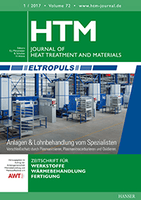
HTM-Journal of Heat Treatment and Materials
Advancing the frontiers of heat treatment and materials science.HTM-Journal of Heat Treatment and Materials, published by WALTER DE GRUYTER GMBH, serves as a vital platform for the dissemination of research in the fields of Industrial and Manufacturing Engineering, Materials Chemistry, and Metals and Alloys. With an ISSN of 1867-2493 and an E-ISSN of 2194-1831, this peer-reviewed journal focuses on the advancements and methodologies associated with heat treatment processes, materials innovation, and their applications across various industries. Notably recognized in the Q3 category for Industrial and Manufacturing Engineering and Materials Chemistry, as well as Q2 for Metals and Alloys, the journal has garnered significant attention, illustrated by its Scopus rankings, placing it among the scholarly discussions within the field. Although it operates under a closed access model, the journal remains committed to impactful research that influences both academia and industry, ensuring its relevance and importance in shaping future developments in materials science. It is an essential resource for researchers, professionals, and students striving to stay at the forefront of heat treatment and materials research.
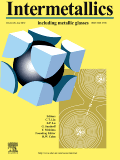
INTERMETALLICS
Connecting Chemistry and Engineering through IntermetallicsINTERMETALLICS, a prestigious journal published by ELSEVIER SCI LTD in the United Kingdom, has been a vital resource in the fields of Materials Science, Mechanical Engineering, and Chemistry since its inception in 1993. Renowned for its rigorous peer-review process and commitment to high-quality research, this journal enjoys an impressive position within the top quartile (Q1) rankings of its categories, signifying its influence and esteem in the academic community. With a particular emphasis on the study of intermetallic compounds and their applications, INTERMETALLICS attracts groundbreaking research and innovative contributions that push the boundaries of knowledge in metals and alloys, as well as mechanics of materials. Researchers looking for a platform to disseminate cutting-edge findings will find this journal an exemplary choice, further enhanced by its commendable Scopus rankings that illustrate its widespread recognition and relevance. Though it does not currently offer Open Access options, the journal remains committed to advancing the field through selective publication of impactful research, making it an essential reference for researchers, professionals, and students alike interested in the dynamic interplay between materials and engineering.
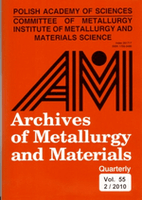
ARCHIVES OF METALLURGY AND MATERIALS
Unlocking Innovations in Metals and AlloysArchives of Metallurgy and Materials is a prestigious open-access journal published by the Polish Academy of Sciences, Institute of Metallurgy and Materials Science. With its ISSN 1733-3490 and E-ISSN 2300-1909, this journal has been a critical resource for researchers and professionals in the field of materials science since its establishment in 2004. The journal focuses primarily on advancements in metals and alloys, contributing to the growing body of knowledge in this dynamic and evolving discipline. As acknowledged in the 2023 Scopus rankings, it currently holds a Q3 category in both Metals and Alloys with a rank of #117 out of 176 journals, indicating its commitment to quality research despite being relatively young in the indexing landscape. With its open-access policy initiated in 2010, the journal aims to enhance the dissemination of scientific findings and encourage collaboration among the global materials science community. Researchers, students, and industry professionals are invited to explore the valuable insights and innovations showcased within Archives of Metallurgy and Materials, contributing to the advancement of material technologies and applications.

Acta Metallurgica Slovaca
Fostering innovation in materials science and metallurgy.Acta Metallurgica Slovaca is a distinguished open-access journal published by SCICELL SRO that has been pivotal in the field of Materials Science and Metallurgy since its inception. With a robust commitment to disseminating high-quality research, this journal covers a wide array of topics within the scope of metals and alloys. Now indexed in Scopus, it ranks 82nd out of 176 in its category, reflecting a growing influence within the scientific community. With a quartile ranking of Q3 as of 2023, Acta Metallurgica Slovaca serves as an essential platform for researchers and professionals seeking to share innovative findings and developments in metallurgical science. Open access since 2013, it ensures that research is accessible to all, fostering collaboration and engagement across academia and industry worldwide. With a converged publication timeline extending from 2009 to 2024, this journal continues to play a crucial role in advancing knowledge and addressing contemporary challenges in the metallurgy sector.

METALLURGICAL AND MATERIALS TRANSACTIONS B-PROCESS METALLURGY AND MATERIALS PROCESSING SCIENCE
Shaping the Future of Materials Science Through Rigorous ResearchMETALLURGICAL AND MATERIALS TRANSACTIONS B-PROCESS METALLURGY AND MATERIALS PROCESSING SCIENCE, published by Springer, serves as a pivotal platform in advancing the field of materials science, focusing specifically on the intricacies of process metallurgy and materials processing. With an ISSN of 1073-5615 and an E-ISSN of 1543-1916, this esteemed journal boasts an impressive standing with its 2023 category quartiles, ranking Q2 in Condensed Matter Physics, Materials Chemistry, and Mechanics of Materials, while achieving a top-tier Q1 classification in Metals and Alloys. Positioned in the United States, the journal has been publishing leading research since its inception, with converged years spanning from 1973 to 1979 and 1995 to 2024. The journal's robust impact within its fields is reflected in its Scopus rankings, notably ranking #42 out of 176 in Materials Science with a 76th percentile. Though not an open access journal, its comprehensive and high-quality research articles cater to the needs of researchers, professionals, and students, ensuring they remain at the forefront of advancements in metallurgy and materials processing science.
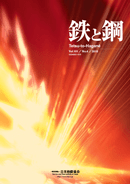
TETSU TO HAGANE-JOURNAL OF THE IRON AND STEEL INSTITUTE OF JAPAN
Exploring the Frontiers of Materials ScienceTETSU TO HAGANE - JOURNAL OF THE IRON AND STEEL INSTITUTE OF JAPAN is a prominent journal that publishes cutting-edge research in the fields of metallurgy, materials science, and condensed matter physics. Since its inception, this esteemed publication has served as a vital resource for professionals and researchers interested in the advancements in iron and steel technology. Published by the Iron Steel Institute of Japan, this journal has embraced an Open Access model since 2020, facilitating broad dissemination of knowledge to a global audience. The journal showcases significant contributions to materials chemistry and alloys, while consistently ranking in the Q3 and Q4 quartiles across various fields, reflecting its commitment to maintaining rigorous academic standards. Located in the heart of Tokyo, this journal not only highlights research developments in Japan but also fosters international collaboration, making it an indispensable asset for anyone engaged in the study and application of iron and steel.
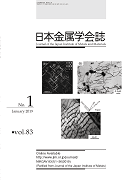
Journal of the Japan Institute of Metals and Materials
Advancing metallurgy and materials science since 1937.Journal of the Japan Institute of Metals and Materials (ISSN: 0021-4876, E-ISSN: 1880-6880) serves as a vital academic platform under the esteemed auspices of the Japan Institute of Metals & Materials. This journal, with a rich publication history dating back to 1937, focuses on advancing knowledge in the fields of metallurgy, materials science, and engineering, making it an important resource for researchers, professionals, and students alike. Although the journal has been categorized in Q4 quartiles across several subject areas, including Condensed Matter Physics and Materials Chemistry, it plays a critical role in disseminating essential findings and fostering discussion regarding innovations in metal and materials research. Notably, the journal operates without open access, which encourages targeted readership engagement through its curated content. Based in Japan, it continues to contribute significantly to the academic community by bridging the gap between scientific inquiry and practical application in materials technology.
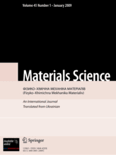
MATERIALS SCIENCE
Fostering Collaboration in the World of Materials.MATERIALS SCIENCE, a prominent journal published by SPRINGER, serves as a vital resource for researchers, professionals, and students in the fields of materials science, mechanical engineering, and condensed matter physics. With its ISSN 1068-820X and E-ISSN 1573-885X, this journal has been dedicated to sharing innovative research since its inception in 1993, and it continues to publish groundbreaking findings through 2024. Although it operates as a traditional subscription-based journal, its ranking in the Q3 quartile across multiple scientific categories, including Condensed Matter Physics, Materials Science, Mechanical Engineering, and Mechanics of Materials, signifies its relevance and impact in the academic community. Notably, its Scopus classifications reveal a competitive standing among its peers, ranking within the 25th to 33rd percentiles across various engineering and physics disciplines. The journal remains a key platform for disseminating valuable insights, fostering collaboration, and advancing the understanding of materials science.